You are in the nuclear repository, the mother archive, the matrix of the essay(s). Here you will find texts, microfilms, and 360º montages as part of an incursion in the fissures and shadows of a Mexican symbol such as Tlatelolco.
Additionally, you may find out about expanded cinema presentations, installations and download the book of the project.
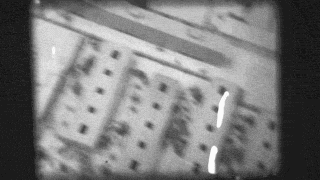
The Adolfo López Mateos (Nonoalco Tlatelolco) complex, inaugurated in 1964 and built over an emblematic area of the Valley of Mexico, condenses an utopian and recurrent dream of modernization and transformation of the landscape of the Mexican capital. The urban design responded to the necessity of living spaces for the growing middle class of the time, and also offered solutions regarding services to their residents, following the tendency of other parts of the world where urban developments were constructed as cities within the city. The Mexican project is known internationally for the superposition of 3 architectural times; pre-hispanic, colonial and modern, thanks to the so called Three Culture Square. Later, in 1968, the square was marked by the infamous student massacre of the 2nd of October. And to this reputation of the complex, in September 1985 came the impact of the earthquake that vanished many of its residents.
The relevance of the territory occupied by the urban complex goes back to pre-hispanic times. Sister city of Tenochtitlan, the Aztec Capital, Tlatelolco carries the historical weight of hosting the most important market of that age, and having been the site of rendition against the Spaniards; later, it was seat of the first college founded in the Americas (in the European sense of the word), which can be seen as a counterpoint to the former Tower of the Ministry of Modern Affairs erected several centuries later, from where the killing of students was witnessed in 1968 and that today is home to different cultural venues of the National University. Tlatelolco is a labyrinth of the Mexican memory in which the wanderer is shaken by fascination and terror.
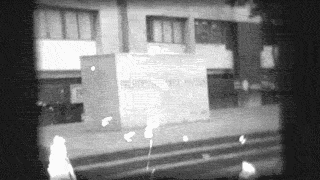
The first symptom of presidential omnipotence is the name given to the urban development; President Adolfo López Mateos. Proof of vertical and authoritarian politics, centered in the prestige of the ruling class. It doesn't surprise us, then, that the urban complex is known only as Nonoalco-Tlatelolco or Tlatelolco. The project didn't only transform the land it occupied, but the entire landscape of the Valley of Mexico. Tlatelolco is a trace on the urban plan of the Mexican capital, one of the many monuments of the spirit of urban development that has altered the geography of the vale. The way in which the towers rise over the center of the valley draws me to the imaginary comparison with that sand hill over which the sister city of Tenochtitlan was erected. It seems unthinkable, but in a way both images appear as an extension of one another.
What we see as that formation of colossal imprints of modernity, almost the comical ruins of a dystopian parody, occupies merely a third of what the original urban project intentend to cover, since it seeked to extend all the way to downtown Mexico City, rushing over the architectural patrimony of six centuries. This was the heart of the revolutionary spirit of President López Mateos, for whom the great urban complexes pushed forward by his government were part of a 'pacific revolution' that, according to his view, intended to prevent a 'violent revolution', as it reads in the project's inaugural publication, which saw the light in 1964. Not 5 years will go through for the bullets and the laments to resound along the hallways of the complex, and for violence to pervert this supposedly pacific dream of the Mexican presidentialism.
The buildings remain as encrypted messages. If in 1521 some heads were hanged in the pyramids and palaces as admonition and symbol of the Aztec's fall, in 2018 the concrete columns seem to warn us about the reality of a failed national project, fractured from its origin.
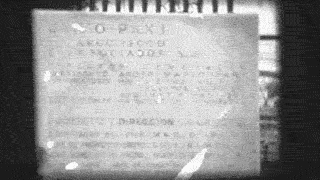
Tlatelolco represents a space of common experience that ties together the history of the Mexican people; the great Tlatelolco market, the church erected with the tezontle (porous red rock) of the conquered temples, the train station and the railway workshops, the popular neighborhoods (barrios) that extend from the center of the city to the North up to the urban complex that washed away the railway workshops as the workshops themselves washed away the trees and the lake and some families, and the great tower of the ministry from where the student massacre was witnessed in complicity, and oh, the Three Culture Square! and the earthquake that we know by heart, even if we forget it, and today the University, the museums, the robberies and the femicides. Tlatelolco means sand hill in the aztec tongue, in its ten letters all the ages of what today is called Mexico have a place. It is a mirror, no, a crack in the mirror, of this country.
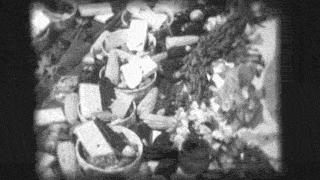
Tlatelolco was founded in 1337 after, according to Fray Diego Duran, “some of the elders [of Tenochtitlan], believing that they deserved more than what was given to them and that they were not treated with the honor they deserved, rebelled and decided to seek for a new place to live, and walking along the reedbeds they found a small hill and notifying their allies, they went to settle there, the place was called Xaltelulliy which today we call Tlatilulco (...) from that day they were never in peace nor harmony with their brothers the mexicans.”
Tlatelolco’s market was one of the most important of the lacustrine valley from the time of Tenochtitlan and all the way to the Colony. Bernal Díaz del Castillo offers testimony of the conquerors reaction when they witnessed this majestic commercial settlement: “we were in awe of the multitude and goods there were and the great concert and regiment in everything there (...) Each type of merchandise was labelled and they had situated their sale sites.”
Tlatelolco was also the site where the mexica people fell, the last site of resistance against the Spaniards, where the lakes went from the emerald spell-like color to a scarlet red from the blood, as stated by the Codex Tlatelolco:
“It was then when the tlatelólcatl perished, the great tiger (warrior), the great chief. From then, war extended, revolving it all. It was also then when the women jumped into battle, when they battered (the enemies) and when they were made prisoners; they were dressed with warrior insignias, they pulled their dresses to pursue the enemy better.
It was then also when the canopy was raised for “the Capitán” in the temple of the market and where they erected a catapult for rocks.
They stood there ten days fighting in the temple of the market. That happened with us; this was what we saw, what we witnessed with an awe proper of tears and compassion, for we suffered many sorrows.
In the paths there layed broken bones, scrambled hairs, the rooftops of the houses were open, the dwellings were red from the blood, the streets teemed with worms. The walls were stained with brains, water was reddish, as it were colored. We drank it as such. Until we drank brackish water.”
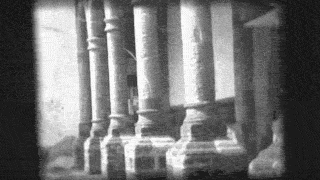
Founded 15 years after the fall of Tenochtitlan for the sons of the conquered, the College of Santiago Tlatelolco is considered as the first university of the continent. The objective was to form priests and governors through the instruction of the gifted among the conquered indians. As costume praised, the indigenous name was preserved and complimented by the Spanish Name Santiago (Tiago comes from lake)- Tlatelolco (sand hill).
Bishops, diplomats, visitors were amazed by how “apt and capable” the indians of these lands proved to be:
“Very talented students that not only occupied the chairs at the school, but served also to teach younger religious students, supplied the lack of readers for finding the elder religious masters too occupied in the instruction of the indigenous. And since these didn’t receive the habit, we can deduce that the attendees were forcibly Spanish or Creole, being so that the indigenous race was giving teachers to the conquerors, without raising jealousy. Historical fact worth of meditation” (García Icazbalceta). The true masters were the indians (they could be). Isn’t it necessary today to listen to them?
Bernardino de Sahagún narrates that the provincial minister, Father Toral, when visiting the school, said that is was of “great help for the conversion of the naturals” (...) “clean from all heresy” that “help plant and sustain our catholic faith”. And Viceroy Mendoza: “In this capital in the zone of Tlatelulco (Tlatelolco) there is a college of indians, in which they are raised in the christian way and taught the good letters, and they have proved much in them…”
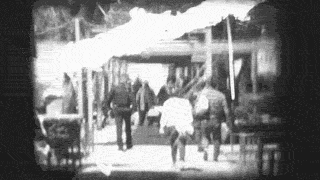
The urban complex Adolfo López Mateos - Nonoalco-Tlatelolco was a project destined to the control of the population. In the architectonic project, it is established as the main objective to regenerate the “horseshoe of slums”. This description refers to a chain of neighborhoods that surrounded the grounds destined to the railway workshops over which the complex was built, neighborhoods that occupy to our day the territory that during the Colony was destined to the dwellings of the indigenous, who lived separated from the colonies of Spanish and Creole, displaced to the margins of the ancient colonial center of the Noble City of Mexico. In the document that presents this modernist project, it is stated that the urban complex represented the “first step to the urbanistic regeneration of the great mexican metropolis”. Contrary to attaining its objective, fifty years after its inauguration, these slums seem to have extended over the residential zone, filtrating through the walking paths and in between the bars that since decades ago the residents have installed in the buildings’ entrances for security reasons, and that were open before for the walkers flow, interfering then with the original design.
In the 80’s, Mario Pani affirmed:
“The opportunity of Tlatelolco came when an internal development of the city and its regeneration was projected. It wasn’t only a matter of housing, but of regenerating a part of the city that in that time, in 1958 that we undertook the urban study, we called the ‘horseshoe of slums’, that is still the same horseshoe of slums. I am talking about 22, 23 years ago, this ring of slums that surrounds the center of Mexico City, that is, the growth of the city during the XIX Century that the railway grounds stopped. (...) There was an analysis of 150 thousand families (...) This complex has been poorly managed (...) We are trying to rescue this complex, which has the features we’ve mentioned, that has all the services and enormous open spaces.”
And, thirty years later...

There is a crisis of the arché, a crisis of the origin, or better said, of the quests and discoveries of the origin. Of the invention of possible orders of meaning. Orders of experience in its multiple manifestations – sensorial, intellectual, spiritual-. In Tlatelolco, this crisis of the arché has an architectonic condensation, a shattering material manifestation. An ideal place for meditating about the challenges of the complicity between city, habitation, memory and death –passion–. Here the concrete is a mirror also of an urban plan in agony, a city project without head nor feet that survives miraculously.
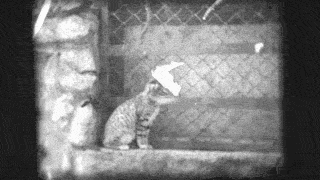
The city is a struggle of times. The blood, the flesh, the stone, the mirages in which trees and water have become in this postmegalopolis, absorb the resonances that tear the mexican temperament appart. In Japanese architecture there is a concept that seems to open opportunities for contemplating this struggle of times: the ma, the resonant interval in between the constructed space, the unoccupied distances between the multiple materialities that constitute the city. In Tlatelolco, the ma shelters the secrets of this struggle of times in greyish, redish and ocher tonalities. It is still traversed by birds, the wind waves the leaves of the ash trees, the privets and the eucalipts. It is not precisely the memory of the stones, but the memory of the whole ambience that is present here. The memory of a civilization that throughout five centuries has profoundly altered the landscape of the Valley of Mexico, until – maybe – we die of thirst and suffocation - of forgetfulness.
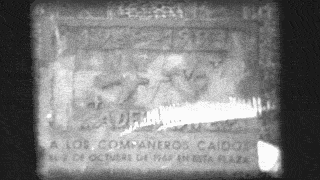
Nothing was the same in Tlatelolco after the night of October the 2nd of 1968. The echo of the flowing of the blood of students, soldiers, civilians (all of them equally innocents and culprits) still mark these lands; bloody jets that have been flowing through these cracks from centuries before these killings, even before the stones of this plaza were placed, even if the modern mask had tried to disguise it (blood shed among brothers, blood shed by lovers, between conquerors and conquered, oppressors and oppressed). As it reads in a script that I wrote in tandem with a brother: that day of the student killings, after 6:10 pm, everything was just noise.
From the next day of the killings and for months, residents left their apartments one by one. The smell of blood was incompatible with the dreams of the hard working middle class. Not only were students, soldiers, civils killed – all the pretensions of modernity were killed as well. It was then when the modern Tlatelolco, barely a few years after its foundation, became yet another ruin next to the archaeological site.
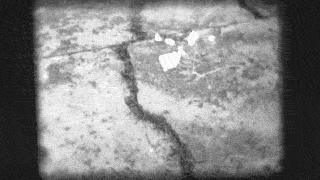
In the document of architectonic design, the team headed by Mario Pani established that following the “general ideas that inspire our project [...] and being indispensable to build cheap and good, we have foreseen the necessity of building in height.” Twenty years after its inauguration, in September 1985, the Nuevo León building collapsed, taking some 300 bodies among debris. Other buildings were demolished; all the remaining(?) reinforced. One of the architectural adjustments was the remotion of the decorative slabs from the facades that gave the characteristic look of the early photographs of the modernization project, by the 80s already in ruins. Among us who know the post-earthquake Tlatelolco and take a look at the photos from the 60s, there are those who discover in those images an inescapable touch of simulation and even phantasy, as if those photographs were still an architectonic projection and not still images taken in site, it is as if the Tlatelolco of López Mateos was always a phantasy. 1985, after 68, was witness of the second exodus from Tlatelolco. The urban complex changed forever.
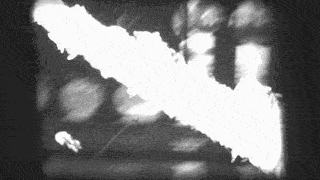
The architectural design of the urban complex was inspired by Le Corbusier’s constructive principles. The modular concept was the super-block, a great built extension where we find mixed uses, such as habitation, services and green areas. In the super-block “you will find the school, the shops, sporting and recreational areas (...) if we compare the super-block with the ordinary block, we see that the latter only functions for inhabiting, since work, recreation, commerce, education, sport, etc. are located outside and require transportation, expenses and loss of time.” The super-block had everything that the modern family needed.
Time, in modern life, was the thing that people wanted to save the most; even more than money, and the super-block gave people the time to enjoy the family. According to the principles of urban development, green areas allowed that free time was invested in recreation and family development.
“A vast surface of the terrain”, they wrote in the original project, “is destined to gardens”, and also “areas for different services: schools, daycare, hospitals, shopping centers, civic centers, etcetera.” Even if the urban complex is a ruin among ruins (a ruin that coexists with the tlatelolco tezontle and its spanish perversion, ruin of a failed idea of a country, ruin haunted by crime and desolation), the area conserves these great extensions of land destined to gardens and services, which are a magnet even for visitors that don’t live in the complex but visit it every week. A constructive premise that through this project proofs the value of commons spaces for the wellbeing of the inhabitants of a city. A reminder for those who plan the city, who often forget that everyone needs to breathe, even themselves.
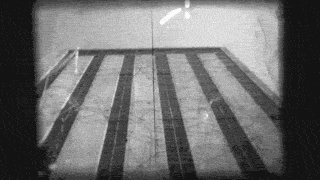
From the 15th floor of the Tower of Foreign Affairs, designed by the Architect Pedro Ramirez Vazquez, the 2nd of October killings were witnessed. Today, the 16th floor houses a laboratory of cultural initiatives that belongs to the National University, where they support young creatives in the development of their professional careers. In the floor level there are museums and a community art school in the building that used to be a nursery for the children of bureaucrats. The transformation of the site continues and, in the horizon, tezontle and concrete seem to continue all the way to the Chiquihuite mountain.
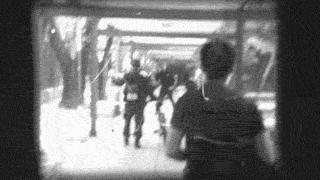
Spaces destined to the development of the youngest are essential for the wellbeing of the youth in big cities, where dangers grow with the demographic explosion and the expansion of the urban sprawl. In the urban complex of Nonoalco-Tlatelolco, these spaces aimed to provide security for families according to the dream of modernization that the project brought forward, a security threatened by the voracious development of the Mexican capital during the second half of the XXth century. The children areas of Tlatelolco became very famous in the sixties for its playgrounds that were faithful to the modernism of the architectural design, with examples such as the slides that resembled spaceships which fascinated the young and not so young.
One November morning of 2018, month of the dead, in the surroundings of one of these playgrounds, a few meters away from a primary school and a kindergarten, next to the Primo Verdad building, a black bag appeared from which a rotten smell escaped.
The police responded to the neighbours call and found, behind the zipper, the dead body of a 14 year old girl. She was killed a few meters away from the site; a woman and a man, both in their early twenties, were the main suspects. When I read this in the newspaper, the passage from the codex Tlatelolco that narrates the imminent victory of the conquerors came to mind: “And all this happened to us. We saw it, we contemplated it; with this sorrowful and sad fate we found ourselves anguished.” Anguish and blood remain, half a millennium later, as inexorable signs of these lands. A month went by, days before new year, and the body of the female suspect of killing the girl appeared in a nearby neighborhood. She was killed with a fire weapon. Blood for blood, maybe, but blood after all. Water and air may be scarce in this valley, but it seems that we will never be missing blood.
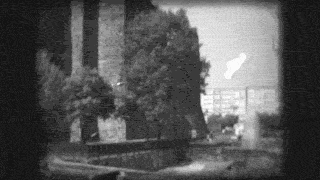
The church of Santiago Tlatelolco was built with the same stones of the prehispanic temples. The voices of the bearded and the beardless say that the conquered, at least in the beginning, refused to go inside the temple. The native of this land didn’t go inside the house of God. Just as the church of Tlatelolco, the palaces of many noblemen and creole were built with the same stones that belonged to the prehispanic constructions. Downtown Mexico City is witness of this transformation of the stone.
Every artistic practice inserts itself in this flux of transformations that marks the urban landscape of Mexico City. The murals that have accompanied the modern tragic-comedy of Tlatelolco are therefore footprints of what I call the becoming Tezontle or the transformation of the stones (which means nothing else than the transformation of memory and art itself as its rebel child). The murals of the Insignia Tower, designed by Carlos Mérida, have lost several panels with time, as the face of the Mexican also transmutes, falls apart. Other buildings followed these birthmarks with the traces of Nicanor Puente and the network of Community Muralism in the last decades of the XX century, and by younger artists, national and international such as Escif or Eva Bracamontes, in the XXI century. Facades are not static, as the patina of art, and in its modifications, imagination renews its possibilities.
The glass works of Mathias Goeritz, in its dreamy and nostalgic blue, break the colonial crust of tezontle in the Church of Santiago. They invite us, I think, to project this evolution of the creative spirit as a possibility of reinventing the world. It is for this reason that Tlatelolco allows us to look ourselves at the mirror and, why not, shatter it once and for all. With the fragments, we are left to glue the memory of that reflection in a chaotic manner, that chaos that is so faithful to our hybrid and whimsical hearts.
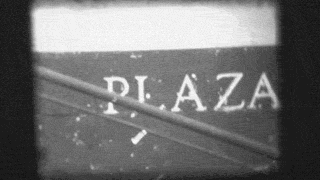
Three cultures are said to coexist here, but I think there are more. One plaza in one date? We are still breathing, if not drinking today, the brackish taste of blood. The difference is that today there is not much water as when the conquered people drank the mixed blood of their brothers and the murderers of their brothers. The waters of this valley of lakes, today, in the XXI Century, are, barely, a rocky and firey mirage. The lethal scum fuses harmoniously with the patina of this great urban complex, with the greyish stains of the concrete, with the crust of tezontle, blurring the limits between the sky and the silhouette of this great idea of stone and time that has been - and is - witness of the evolution of the mexican temperament and landscape.
Dissections over Planes. Essay(s) from Tlatelolco. was born from an invitation by Tlatelolco Central to work around a scale model of the Tlatelolco urban complex in Mexico City (the scale model was created by Central de Maquetas). The essay constitutes a quest for the materiality of memory in complex site such as Tlatelolco, a territory that has captivated my interest since more than a decade ago. Each section of the essay (and its multiple interfaces or activations with the public), explores layers of Tlatelolco through crossing documents produced for the project in different formats with historical and urbanistic documents. It is an exercise on the relationship between architecture and the politics of memory that seeks to ignite a reflection on the viewer and, furthermore, aan invitation to the rediscovery of our ways of inhabiting the city.
Loading...